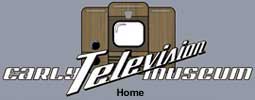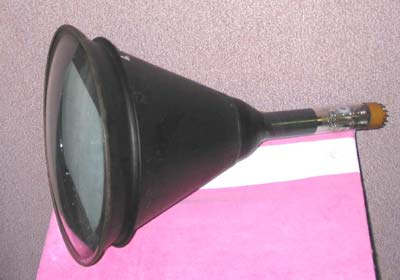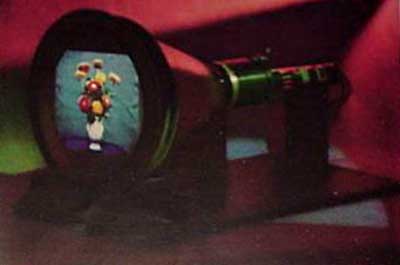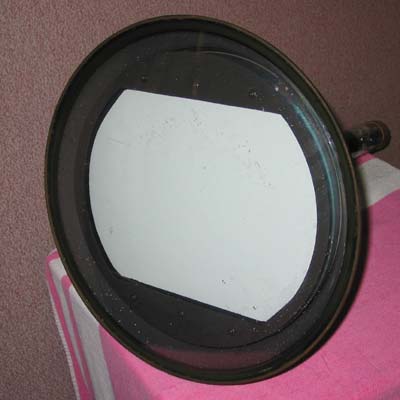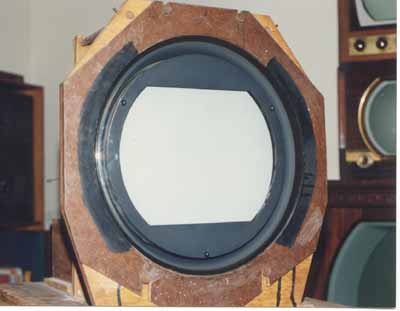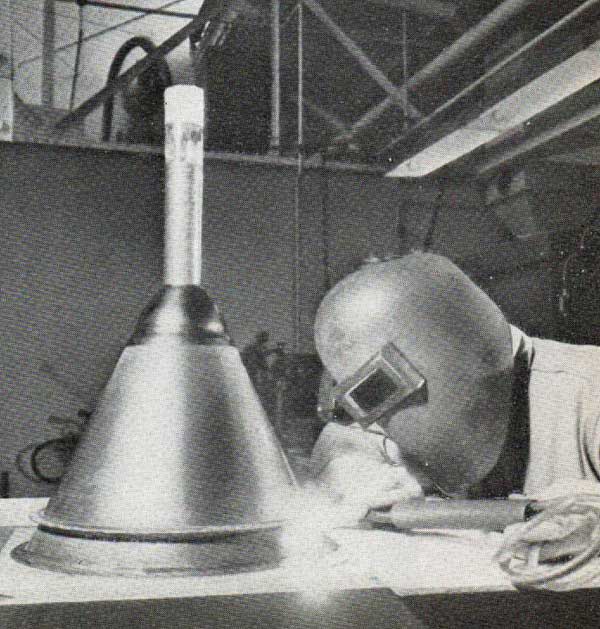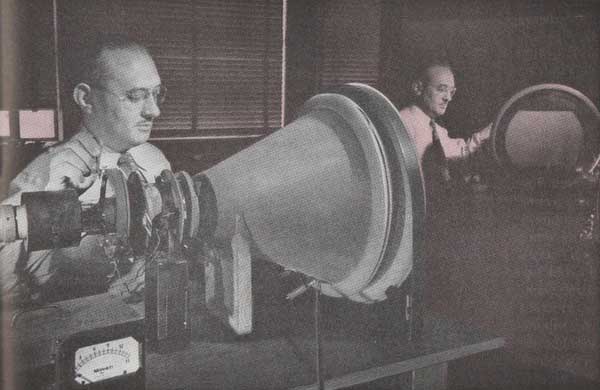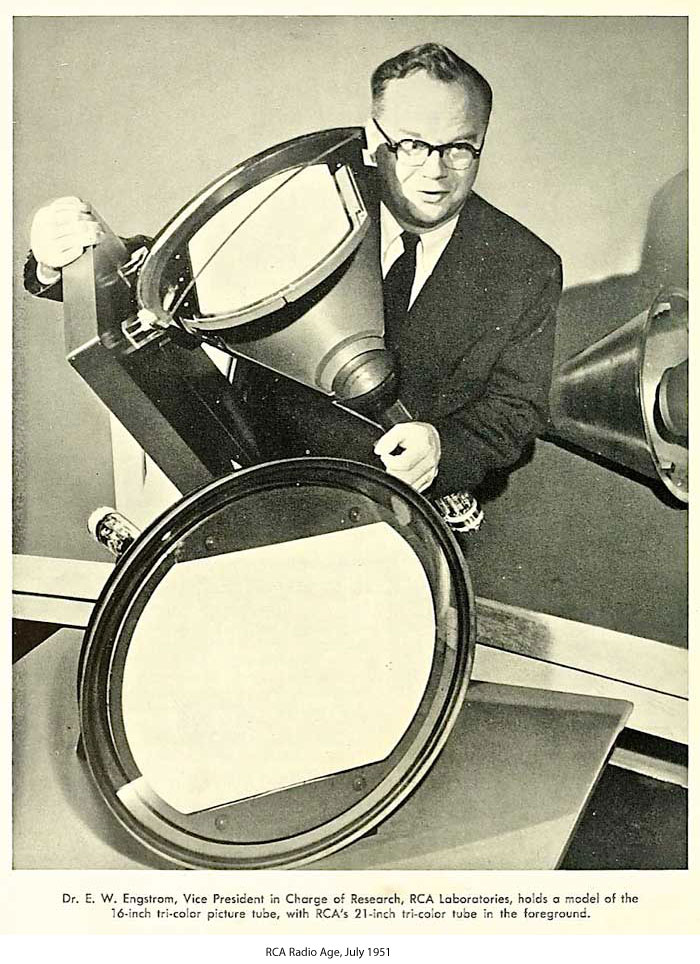Early Color Television
RCA C73293C Developmental 3 Gun Color Tube
From RCA 1950 brochure The following information is from Dave Abramson, owner of the only other C73293C:
Jerome Halphen sent us the following:
From RCA's 1952 Annual Report
Courtesy of Steve Dichter |
